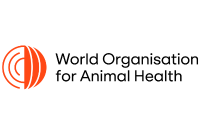World Organisation for Animal Health
Brucellosis is a contagious disease of livestock with significant economic impact. The disease is caused by various bacteria of the family Brucella, which is characterized by abortions or reproductive failure. While animals typically recover and will be able to have live offspring following the initial abortion, they may continue to shed the bacteria.
Various bacteria of the family Brucella tend to infect a specific animal species, including cattle, swine, sheep and goats, camels, equines, and dogs. It may also infect other ruminants, some marine mammals and humans.
Brucellosis in cattle (B. abortus), in sheep and goats (B. melitensis) and in swine (B. suis) are diseases listed in the World Organization for Animal Health (WOAH, founded as OIE) Terrestrial Animal Health Code and must be reported to the organisation (for updates to the Code).
Brucellosis is a zoonosis highly infectious for humans causing a disease often called undulant fever or Malta fever, since it was first recognized in Malta during the 1850s.
Symptoms in humans include intermittent or irregular fever, headache, weakness, profuse sweating, chills, weight loss and general aching. Infections of organs including the liver and spleen may also occur.
Veterinarians, farmers, and abattoir workers are vulnerable to infection as they handle infected animals and aborted fetuses or placentae.
Brucellosis is one of the most easily acquired laboratory infections, and strict safety precautions should be observed when handling cultures and heavily infected samples, such as products of abortion.
The disease can also spread to people through consumption of unpasteurized milk coming from infected animals.
Currently, countries in central and southwest Asia are seeing the greatest increase in cases. The incidence of Brucellosis is very high in China and India.
In our region, Japan, Australia and New Zealand are believed to be free from the agent.
In Asia and the Pacific region, there are 3 WOAH Reference Laboratories for brucellosis situated in China, Korea (Rep. of) and Thailand, respectively. They can provide technical advice and offer training opportunities for personnel from Members, and coordinate scientific and technical studies in collaboration with other laboratories or organizations, including through the Laboratory Twinning programme.
